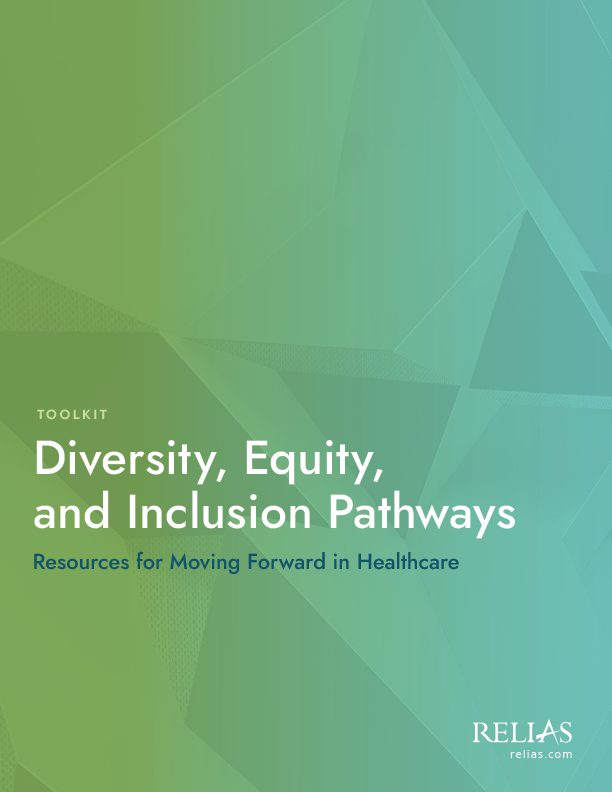Diversity, equity, and inclusion (DEI) efforts across the U.S. build on over half a century of anti-discrimination work that began in the Civil Rights Movement of the 1960s. At that time, proponents focused on correcting discriminatory laws and policies to pave the way for equal rights for every citizen.
Since then, DEI efforts in healthcare, government, education, and business have progressed further. Many now focus on fostering inclusive cultures, creating space for individuals’ authentic selves, and acknowledging the validity of varied life experiences. Recently, some organizations have begun using the acronym “DEIB” to describe these initiatives. What is DEIB, and how does it differ from DEI?
What is DEIB?
The letter “B” at the end of DEIB stands for “belonging.” DEIB is one of the most common of several variations of the DEI acronym used by organizations to reflect newer considerations related to diversity, equity, and inclusion. Here are some variations of DEI currently seen in various contexts:
- DEIB — Including “belonging,” this acronym emerged in 2020 to encompass individuals’ perception of their acceptance within a group. A feeling of belonging means people feel heard, seen, and recognized. Decades ago, mere tolerance was the goal. In DEIB, feeling truly valued is the goal. When members of a group feel valued, their positivity, satisfaction, and well-being increase.
- DEIJ or JEDI — Including “justice,” this acronym emerged in 2020 to acknowledge past wrongs and address them through the realization of full equity. Groups using this acronym may prioritize efforts to help those unfairly held back due to previous discrimination, such as racial or gender inequality. Initiatives could include providing resources or reparations or correcting systemic inequities.
- DEIA — Including “accessibility,” this acronym has been used in federal documents such as President Biden’s 2021 Executive Order on Diversity, Equity, Inclusion, and Accessibility in the Federal Workforce, which outlined policies to advance each area. It defined “accessibility” as the “design, construction, development, and maintenance of facilities, information and communication technology, programs, and services so that all people, including people with disabilities, can fully and independently use them.”
- EDI and D&I — Commonly used in Canada and the UK, “EDI” has the same meaning as DEI. Before DEI became the norm in the U.S., the abbreviation “D&I” was common.
Why belonging matters
A 2021 Achievers Workforce Institute survey examined 3,500 employees’ sense of belonging at work. The surveyors defined “belonging” as “an experience of connection, security, and community” where people feel completely at home. Survey results showed strong connections between employees’ sense of belonging and higher levels of engagement, mental health, resiliency, and productivity — and lower levels of fatigue and emotional exhaustion. These findings indicate that a sense of belonging can drive both employee and organizational performance.
What characteristics comprise a sense of belonging? The Achievers survey grouped findings into five pillars: feeling welcomed, known, included, supported, and connected. In organizations with these elements, employees have a strong sense of belonging and their organizations benefit from the positive effects that come from it.
How belonging relates to DEI
Belonging is closely tied to diversity and equity and is an extension of inclusion. For example, the Achievers survey found that respondents from organizations with diverse senior leadership were more than twice as likely to feel a strong sense of belonging. Those who felt everyone had an equal opportunity to advance also had a greater feeling of belonging.
Employees’ sense of belonging corresponds to how much they like their jobs, how competent they feel, their sense of purpose, how well they can manage obstacles and challenges, and whether they believe they are a good fit for their organization. Like other DEI benchmarks, all of these factors have a direct impact on organizational engagement and retention.
Academy to Innovate HR explained that “DEI is the base to build on,” and that organizations that aren’t inclusive may make it challenging for people to feel they belong. It described belonging as being about “longing to be” and “being for long” — meaning that people long to feel part of a shared vision or purpose and, if they find it, they will stay with an organization for a long time.
Why DEIB is important in healthcare
All workplaces can benefit from a focus on belonging, but the benefits to a healthcare organization are especially important because its effects extend beyond employees to its clients or patients. It may manifest as dignity, respect, and compassion, which can boost the morale and well-being of your healthcare staff and elevate the care of those they serve.
Through its Healthcare Voices at Work Consortium, Perceptyx compiled data from 93,000 respondents across 14 health systems over four years and found that values such as fairness, respect, psychological safety, openness, and feeling valued formed key foundations of belonging. The consortium found that respondents who rated their healthcare workplaces lower for these values often coincided with historically marginalized demographic groups based on race, age, and gender.
Perceptyx also reported that DEIB perceptions may be “socially contagious,” meaning that emotions, attitudes, beliefs, and behaviors can spread within groups — whether they are positive or negative. Leaders who value belonging and work to foster it within their organizations can influence and improve the perceptions of employees, which can translate to beneficial organizational outcomes.

How to improve your employees’ sense of belonging
Now that we’ve answered the question, “What is DEIB?” let’s look at how to incorporate it into your organization. Changing the name of your DEI program to DEIB is not necessary to begin emphasizing belonging as an organizational value. A variety of actions can help, many of which are low in cost. Here are a few examples:
Strengthening onboarding
- Do you consistently provide a warm and inviting welcome on employees’ first day?
- Do you talk about your organization’s commitment to an inclusive and equitable workplace?
- Do you hold events where new hires can get to know other employees and leaders?
Developing employees
- Do you provide frequent opportunities to recognize staff members for their contributions?
- Do you provide ongoing opportunities for professional development?
- Do you enable employees to collaborate across functions and roles?
Building relationships
- Do you provide opportunities for employees to assess and share their unique attributes, such as personality characteristics and strengths?
- Do you promote frequent, high-quality manager contact with employees?
- Do you foster employee connections across the organization?
Enriching your culture
- Do you create space for discussion and healthy debate?
- Does your organization support a variety of employee resource groups (ERGs)?
- Are your organizational events inclusive of all employees?
Recognizing and rewarding employees
- Do you recognize employee milestones such as service anniversaries and major achievements?
- Do you promote team-building activities?
- Do you assess compensation, benefits, and rewards to make sure they are equitable?
Action steps to improve DEIB in your organization
The Healthcare at Work Consortium found an 85% increase in employees viewing DEIB favorably in their organizations when they participated in training or other educational initiatives around DEIB. A quality education program for your organization is an excellent first step.
Implementing an employee recognition program is another good way to improve DEIB. Perceptyx found that over one-third of employees don’t feel their contributions are recognized to the extent they would like. Recognition can be very low in cost, yet it is a large driver of engagement and retention.
Another potentially helpful initiative is an employee survey. Ask a range of questions relating to how satisfied employees feel about issues relating to DEIB. Compare data across demographic groups and focus on developing a psychologically safe culture where all employees feel empowered to voice their concerns.
Conducting a survey communicates the importance your organization places on DEIB, but it’s important to follow up with changes based on survey results. InclusionHub recommends using survey data for decision-making. Being transparent about any changes you implement helps your employees know that you are being responsive to their needs. Readminister the survey regularly to measure improvement, identify new issues, and reinforce its importance.
Additional efforts could include DEIB-focused events such as conversations with external thought leaders, employee resource groups, and mentoring initiatives. If your organization doesn’t have the bandwidth to undertake all these efforts, concentrating your resources on at least one initiative this year will put you ahead of where you currently are. Why not begin your DEIB journey today?

Diversity, Equity, and Inclusion Pathways: Resources for Moving Forward in Healthcare
Access our DEI toolkit to elevate your organizational initiatives, gain insights into how DEI can influence every component of your organization, and learn more about the social determinants of health and how they impact healthcare outcomes.
Access the toolkit →





